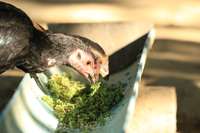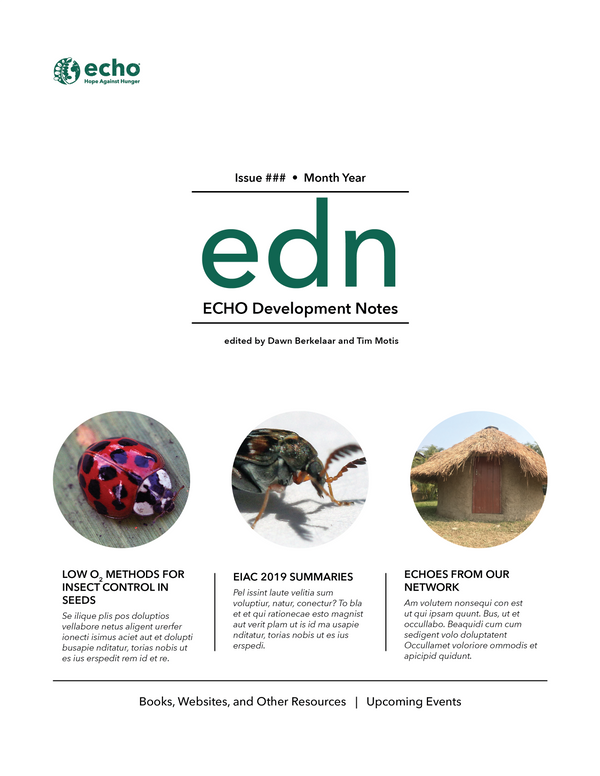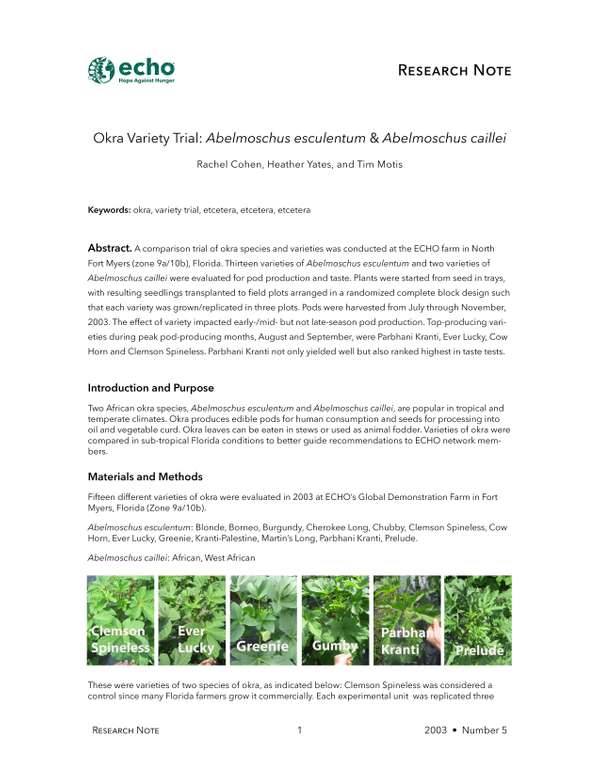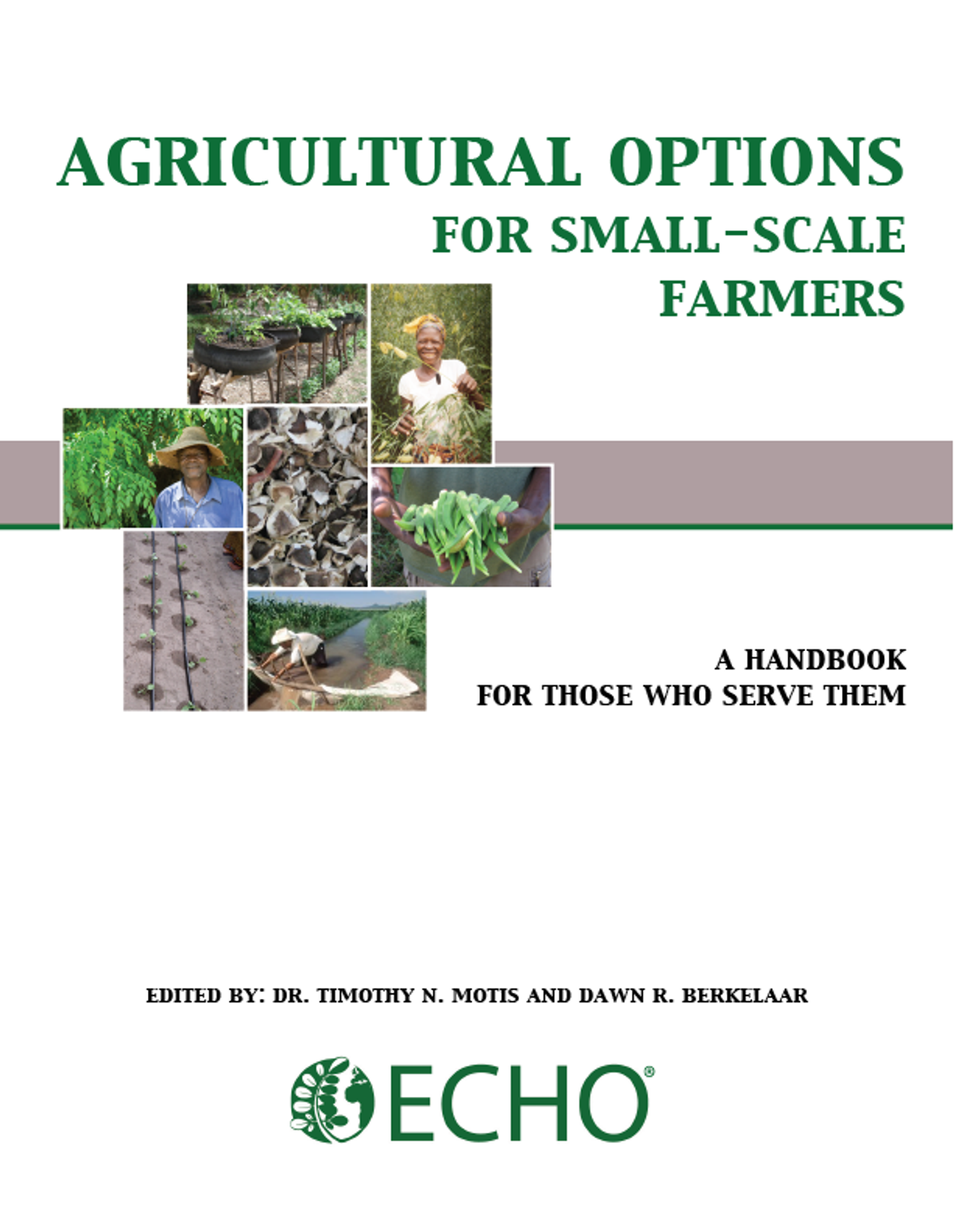ECHO Publications
Latest Publication
EDN 172 Now Available!
Aquatic Plant Production: Azolla and Duckweed for Livestock Feed
Salt-impregnated Biochar as a Desiccant
Echoes from Our Network: Sunflower, Sustainable Economic Recommendations for East Africa
From ECHO's Seed Bank: Malabar Spinach, A Tropical Green Leafy Vegetable
Books, Websites, and Other Resources: ANAFAE resources
ECHO Development Notes (EDN)
In ECHO Development Notes (EDN) we share the most helpful, practical information that we come across about growing food under difficult circumstances. Within each issue you'll find featured techniques, practices, information, and experience to help guide your work in tropical and subtropical agricultural development.
ECHO Technical Notes (TN)
ECHO Technical Notes (TNs) share in depth information about topics important to those working in the tropics and subtropics. Each document introduces and explains the general concept behind the technological solution, and some include examples or step-by-step instructions.
ECHO Research Notes (RN)
ECHO Research Notes (RNs) share results of first-hand trials and experiments, done by ECHO staff or by network members. Material is authored by ECHO staff (past and present) as well as outside writers, all with experience and knowledge of their subject.
ECHO Best Practice Notes (BPN)
ECHO East Africa Notes is a technical e-bulletin containing articles of interest to agriculture and community development workers in East Africa. Besides English, articles may be translated into Swahili.
ECHO Books
ECHO has two ECHO authored and published books: Amaranth to Zai Holes and Agricultural Options for Small-scale Farmers (also available in epub and separate chapters). ECHO has also published books written by Network members including Roland Bunch's second edition of Restoring the Soil and Dan Foutain's Let's Restore Our Land.
Community Contributions
ECHO welcomes submissions to our publications. For information about submitting an article please see the Author Instruction page.
Click here to download a template document that contains headings, fonts, and style suggestions per ECHO's style guide.
Click here to download an example submission article.
Below is an optional training video to help you learn about ECHO's writing style.
ECHO Publications by Release Date
EDN Issue #172

EDN Issue #171

EDN Issue #170

EDN Issue #169

Tire, Sack, and Keyhole Gardens

EDN Issue #168

EDN Issue #167

EDN Issue #166

EDN Issue #165

EDN Issue #164

EDN Issue #163

EAN Issue # 12

AN Issue #43

AN Issue #44

AN Issue #45

AN Issue #46

AN Issue #47

Small-Scale Nursery Management

Integrated Pest Management

Black Soldier Fly Larvae Production

Animal Production Litter Systems

Bamboo Load-Centered Wheelbarrow

EDN Issue #162

EAN Issue #7

EDN Issue #161

EDN Issue #160

EDN Issue #159

EDN Issue #158

EDN Issue #157

EDN Issue #156

EDN Issue #155

EDN Issue #154

EDN Issue #153

EDN Issue #152

EDN Issue #151

EDN Issue #149

EDN Issue #150

Farmer-Centered Climate Change Mitigation

Best Practices for Tropical Dryland Agriculture

EDN Issue #148

Earthbag Seed Banks

AN Issue #42

EDN Issue #147

AN Issue #41

EDN Issue #146

AN Issue #40

EDN Issue #145

AN Issue #39

EDN Issue #144

ECHO Notes de l'Afrique de l'Ouest Numéro 3

100-Fold Vegetable Gardens with Low-Cost Wicking Beds

AN Issue #38

EDN Issue #143

AN Issue #37

Parasitic Plants in African Agriculture

AN Issue #36

EDN Issue #142

Vacuum-Sealing Options for Storing Seeds

AN Issue #35

EDN Issue #141

AN Issue #34 Special Edition

EDN Issue #140

Bamboo for Construction

AN Issue #33

EDN Issue #139

LACN Issue #4

AN Issue #32

EDN Issue #138






